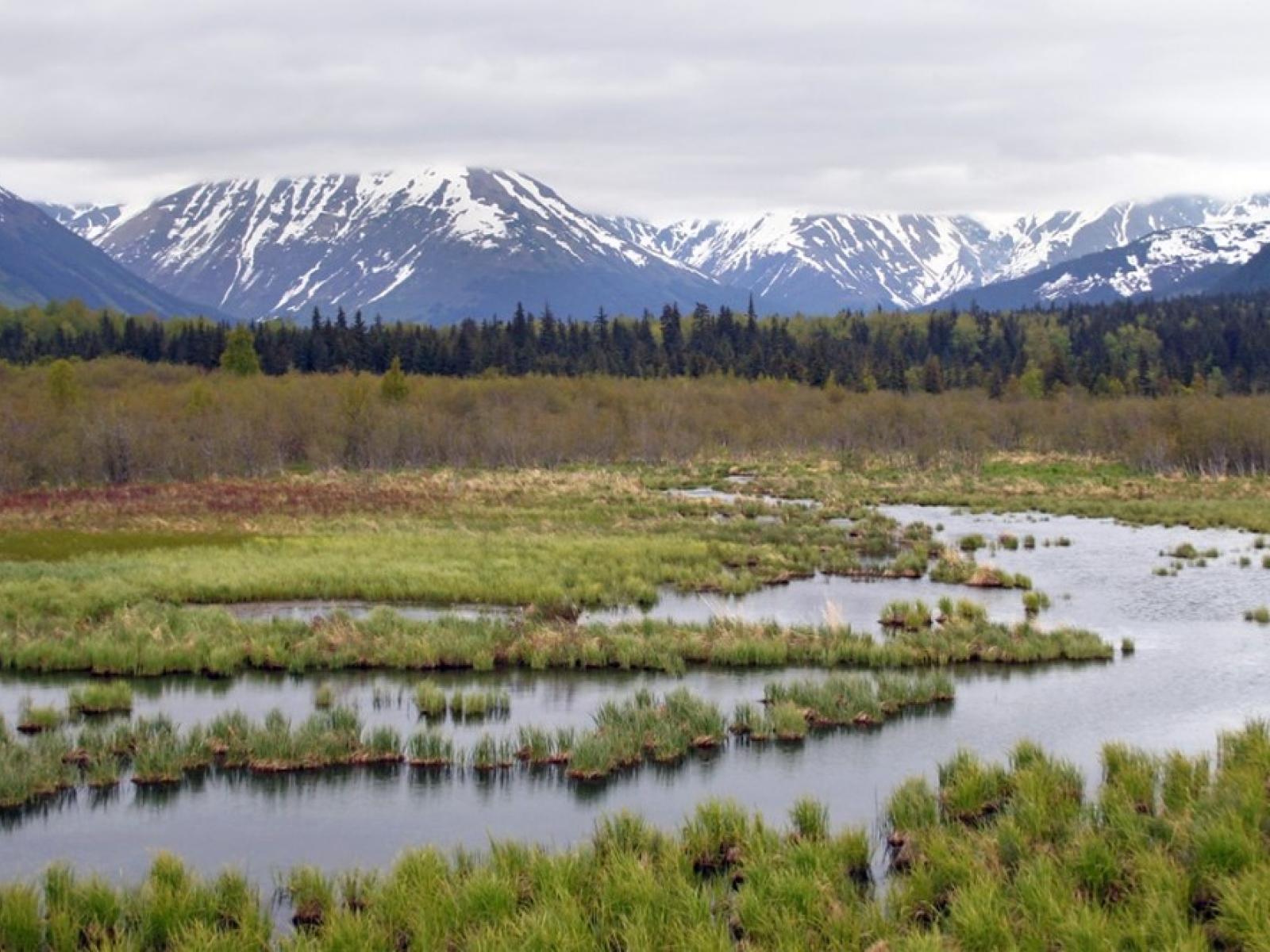Measuring Permafrost Thaw with Streamflow
Information encoded in streamflow reveals how the water-storage capacity of thawed ground changes as permafrost thaws

Streamflow contains information related to the rate of permafrost thaw.
(Image by John A. Kelley | Flickr)
The Science
Approximately one-fifth of the world's land contains permafrost, or permanently frozen ground. To track the pace of permafrost thaw, scientists measure the thickness of the so-called active layer of thawed soil on top of the frozen-solid permafrost. Measurements indicate that the active layer is thickening as the climate warms. Tracking changes in active layer thickness over time is important because structures built atop thawing permafrost are at increased risk of soil compaction and reduced ground stability, but direct active layer measurements are difficult and costly to obtain. This research developed a new method to track the pace of permafrost thaw using streamflow measurements.
The Impact
Active layer thickness is typically hand measured via soil probes and thermometers installed in the ground. Globally, long-term measurements exist at a few hundred sites, limiting broadscale understanding of permafrost thaw. As the active layer thickens, its capacity to store and release water is enhanced to a degree that alters the rate of streamflow in nearby rivers. This research provides a method to detect active layer thickness change using fluctuations in measured streamflow. As streamflow measurements are largely automated, they exist in regions or time periods that lack direct active layer thickness measurements. These measurements also cover much broader spatial areas than point-scale measurements.
Summary
Understanding permafrost thaw and associated active layer thickness change over time is important for mitigating safety hazards and monitoring ongoing changes to Earth’s climate. Simulations are often used to project changes in different parts of the Earth system. However, it is difficult to compare climate model calculations to point-scale measurements of active layer thickness change due to dramatic differences in scale. This work provides a new method to compare active layer thickness change with climate model calculations at a similar resolution. The method differs from the traditional soil-probe and thermometer-based measurements and can be used as an independent check on those types of measurements. In addition, this work provides a theoretical basis of the relationship between changes in soil water-storage capacity and changes in streamflow. The theory can be applied to regions with soil water changes unrelated to permafrost, such as drought or increased rainfall. Overall, this work provides a new method scientists can use to understand how permafrost is changing. It both complements and extends existing methods and measurements, helping researchers develop a more complete understanding of permafrost thaw at broad scales.
PNNL Contact
Tian Zhou, Pacific Northwest National Laboratory, tian.zhou@pnnl.gov
Funding
The Interdisciplinary Research for Arctic Coastal Environments (InteRFACE) project funded this research through the United States Department of Energy, Office of Science, Biological and Environmental Research Regional and Global Model Analysis program.
Published: April 13, 2023
Cooper, M. G. et al. 2023. “Detecting permafrost active layer thickness change from nonlinear baseflow recession,” Water Resources Research, 59, e2022WR033154. [DOI: 10.1029/2022WR033154]